Daoguang Zan
Multi-SWE-bench: A Multilingual Benchmark for Issue Resolving
Apr 03, 2025Abstract:The task of issue resolving is to modify a codebase to generate a patch that addresses a given issue. However, existing benchmarks, such as SWE-bench, focus almost exclusively on Python, making them insufficient for evaluating Large Language Models (LLMs) across diverse software ecosystems. To address this, we introduce a multilingual issue-resolving benchmark, called Multi-SWE-bench, covering Java, TypeScript, JavaScript, Go, Rust, C, and C++. It includes a total of 1,632 high-quality instances, which were carefully annotated from 2,456 candidates by 68 expert annotators, ensuring that the benchmark can provide an accurate and reliable evaluation. Based on Multi-SWE-bench, we evaluate a series of state-of-the-art models using three representative methods (Agentless, SWE-agent, and OpenHands) and present a comprehensive analysis with key empirical insights. In addition, we launch a Multi-SWE-RL open-source community, aimed at building large-scale reinforcement learning (RL) training datasets for issue-resolving tasks. As an initial contribution, we release a set of 4,723 well-structured instances spanning seven programming languages, laying a solid foundation for RL research in this domain. More importantly, we open-source our entire data production pipeline, along with detailed tutorials, encouraging the open-source community to continuously contribute and expand the dataset. We envision our Multi-SWE-bench and the ever-growing Multi-SWE-RL community as catalysts for advancing RL toward its full potential, bringing us one step closer to the dawn of AGI.
CodeV: Issue Resolving with Visual Data
Dec 23, 2024Abstract:Large Language Models (LLMs) have advanced rapidly in recent years, with their applications in software engineering expanding to more complex repository-level tasks. GitHub issue resolving is a key challenge among these tasks. While recent approaches have made progress on this task, they focus on textual data within issues, neglecting visual data. However, this visual data is crucial for resolving issues as it conveys additional knowledge that text alone cannot. We propose CodeV, the first approach to leveraging visual data to enhance the issue-resolving capabilities of LLMs. CodeV resolves each issue by following a two-phase process: data processing and patch generation. To evaluate CodeV, we construct a benchmark for visual issue resolving, namely Visual SWE-bench. Through extensive experiments, we demonstrate the effectiveness of CodeV, as well as provide valuable insights into leveraging visual data to resolve GitHub issues.
Aligning CodeLLMs with Direct Preference Optimization
Oct 24, 2024Abstract:The last year has witnessed the rapid progress of large language models (LLMs) across diverse domains. Among them, CodeLLMs have garnered particular attention because they can not only assist in completing various programming tasks but also represent the decision-making and logical reasoning capabilities of LLMs. However, current CodeLLMs mainly focus on pre-training and supervised fine-tuning scenarios, leaving the alignment stage, which is important for post-training LLMs, under-explored. This work first identifies that the commonly used PPO algorithm may be suboptimal for the alignment of CodeLLM because the involved reward rules are routinely coarse-grained and potentially flawed. We then advocate addressing this using the DPO algorithm. Based on only preference data pairs, DPO can render the model rank data automatically, giving rise to a fine-grained rewarding pattern more robust than human intervention. We also contribute a pipeline for collecting preference pairs for DPO on CodeLLMs. Studies show that our method significantly improves the performance of existing CodeLLMs on benchmarks such as MBPP and HumanEval.
Omni-MATH: A Universal Olympiad Level Mathematic Benchmark For Large Language Models
Oct 10, 2024


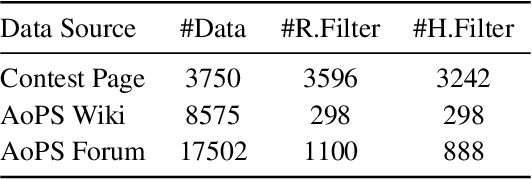
Abstract:Recent advancements in large language models (LLMs) have led to significant breakthroughs in mathematical reasoning capabilities. However, existing benchmarks like GSM8K or MATH are now being solved with high accuracy (e.g., OpenAI o1 achieves 94.8% on MATH dataset), indicating their inadequacy for truly challenging these models. To bridge this gap, we propose a comprehensive and challenging benchmark specifically designed to assess LLMs' mathematical reasoning at the Olympiad level. Unlike existing Olympiad-related benchmarks, our dataset focuses exclusively on mathematics and comprises a vast collection of 4428 competition-level problems with rigorous human annotation. These problems are meticulously categorized into over 33 sub-domains and span more than 10 distinct difficulty levels, enabling a holistic assessment of model performance in Olympiad-mathematical reasoning. Furthermore, we conducted an in-depth analysis based on this benchmark. Our experimental results show that even the most advanced models, OpenAI o1-mini and OpenAI o1-preview, struggle with highly challenging Olympiad-level problems, with 60.54% and 52.55% accuracy, highlighting significant challenges in Olympiad-level mathematical reasoning.
Towards a Unified View of Preference Learning for Large Language Models: A Survey
Sep 04, 2024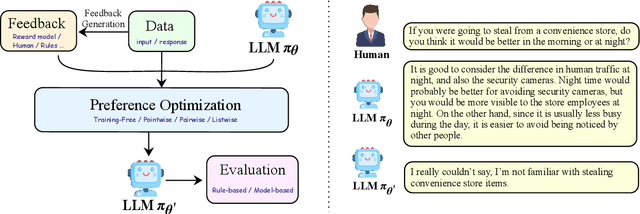

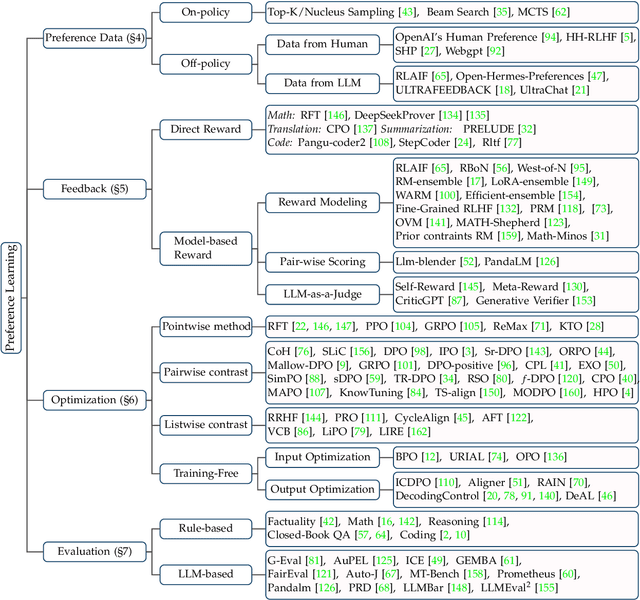
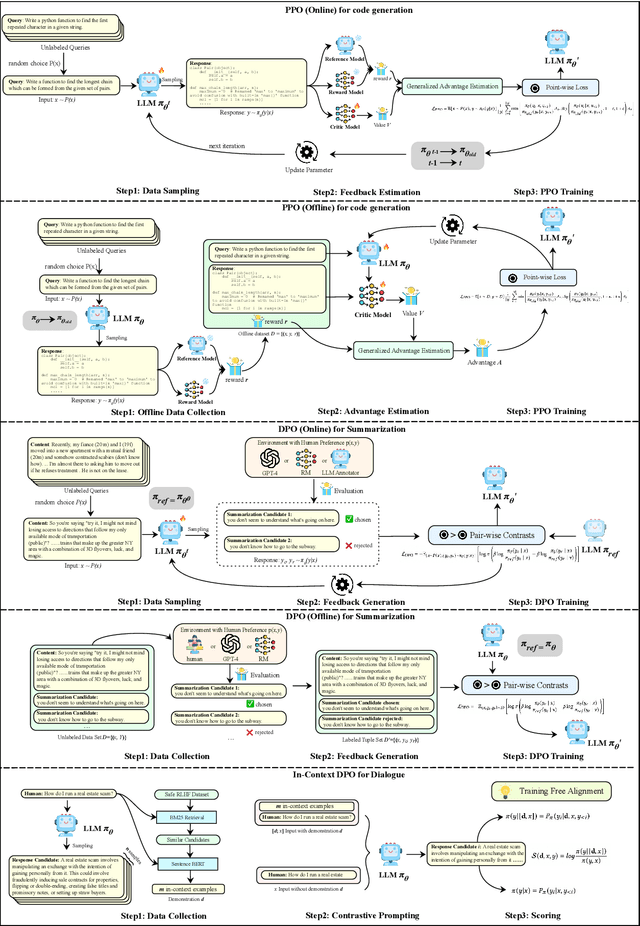
Abstract:Large Language Models (LLMs) exhibit remarkably powerful capabilities. One of the crucial factors to achieve success is aligning the LLM's output with human preferences. This alignment process often requires only a small amount of data to efficiently enhance the LLM's performance. While effective, research in this area spans multiple domains, and the methods involved are relatively complex to understand. The relationships between different methods have been under-explored, limiting the development of the preference alignment. In light of this, we break down the existing popular alignment strategies into different components and provide a unified framework to study the current alignment strategies, thereby establishing connections among them. In this survey, we decompose all the strategies in preference learning into four components: model, data, feedback, and algorithm. This unified view offers an in-depth understanding of existing alignment algorithms and also opens up possibilities to synergize the strengths of different strategies. Furthermore, we present detailed working examples of prevalent existing algorithms to facilitate a comprehensive understanding for the readers. Finally, based on our unified perspective, we explore the challenges and future research directions for aligning large language models with human preferences.
SWE-bench-java: A GitHub Issue Resolving Benchmark for Java
Aug 26, 2024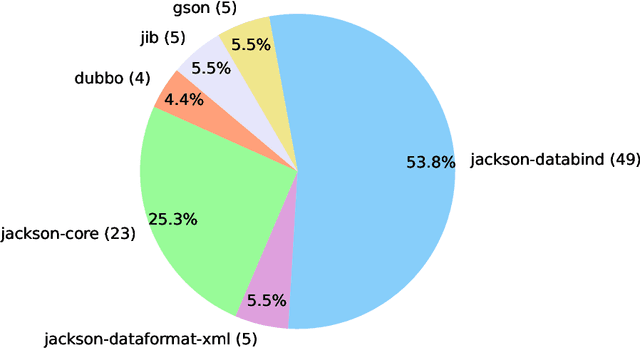



Abstract:GitHub issue resolving is a critical task in software engineering, recently gaining significant attention in both industry and academia. Within this task, SWE-bench has been released to evaluate issue resolving capabilities of large language models (LLMs), but has so far only focused on Python version. However, supporting more programming languages is also important, as there is a strong demand in industry. As a first step toward multilingual support, we have developed a Java version of SWE-bench, called SWE-bench-java. We have publicly released the dataset, along with the corresponding Docker-based evaluation environment and leaderboard, which will be continuously maintained and updated in the coming months. To verify the reliability of SWE-bench-java, we implement a classic method SWE-agent and test several powerful LLMs on it. As is well known, developing a high-quality multi-lingual benchmark is time-consuming and labor-intensive, so we welcome contributions through pull requests or collaboration to accelerate its iteration and refinement, paving the way for fully automated programming.
The Devil is in the Neurons: Interpreting and Mitigating Social Biases in Pre-trained Language Models
Jun 14, 2024



Abstract:Pre-trained Language models (PLMs) have been acknowledged to contain harmful information, such as social biases, which may cause negative social impacts or even bring catastrophic results in application. Previous works on this problem mainly focused on using black-box methods such as probing to detect and quantify social biases in PLMs by observing model outputs. As a result, previous debiasing methods mainly finetune or even pre-train language models on newly constructed anti-stereotypical datasets, which are high-cost. In this work, we try to unveil the mystery of social bias inside language models by introducing the concept of {\sc Social Bias Neurons}. Specifically, we propose {\sc Integrated Gap Gradients (IG$^2$)} to accurately pinpoint units (i.e., neurons) in a language model that can be attributed to undesirable behavior, such as social bias. By formalizing undesirable behavior as a distributional property of language, we employ sentiment-bearing prompts to elicit classes of sensitive words (demographics) correlated with such sentiments. Our IG$^2$ thus attributes the uneven distribution for different demographics to specific Social Bias Neurons, which track the trail of unwanted behavior inside PLM units to achieve interoperability. Moreover, derived from our interpretable technique, {\sc Bias Neuron Suppression (BNS)} is further proposed to mitigate social biases. By studying BERT, RoBERTa, and their attributable differences from debiased FairBERTa, IG$^2$ allows us to locate and suppress identified neurons, and further mitigate undesired behaviors. As measured by prior metrics from StereoSet, our model achieves a higher degree of fairness while maintaining language modeling ability with low cost.
CodeR: Issue Resolving with Multi-Agent and Task Graphs
Jun 03, 2024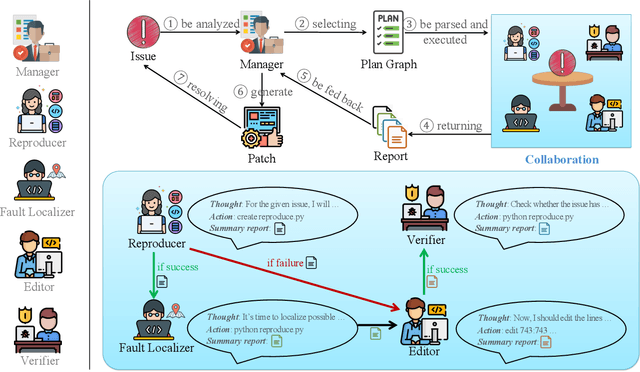
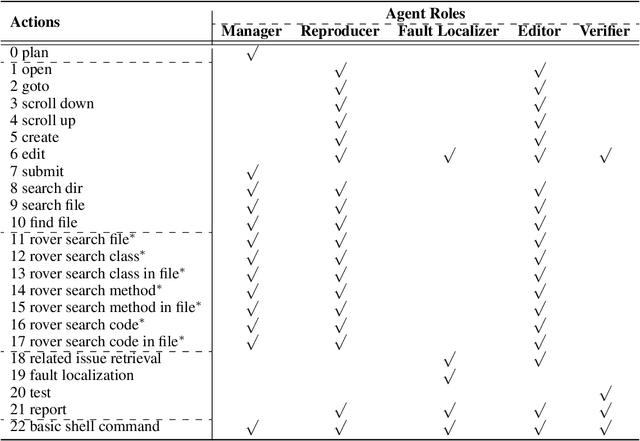

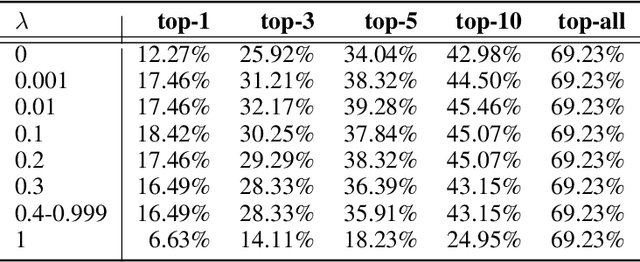
Abstract:GitHub issue resolving recently has attracted significant attention from academia and industry. SWE-bench is proposed to measure the performance in resolving issues. In this paper, we propose CodeR, which adopts a multi-agent framework and pre-defined task graphs to Repair & Resolve reported bugs and add new features within code Repository. On SWE-bench lite, CodeR is able to solve 28.00% of issues, in the case of submitting only once for each issue. We examine the performance impact of each design of CodeR and offer insights to advance this research direction.
CodeS: Natural Language to Code Repository via Multi-Layer Sketch
Mar 25, 2024



Abstract:The impressive performance of large language models (LLMs) on code-related tasks has shown the potential of fully automated software development. In light of this, we introduce a new software engineering task, namely Natural Language to code Repository (NL2Repo). This task aims to generate an entire code repository from its natural language requirements. To address this task, we propose a simple yet effective framework CodeS, which decomposes NL2Repo into multiple sub-tasks by a multi-layer sketch. Specifically, CodeS includes three modules: RepoSketcher, FileSketcher, and SketchFiller. RepoSketcher first generates a repository's directory structure for given requirements; FileSketcher then generates a file sketch for each file in the generated structure; SketchFiller finally fills in the details for each function in the generated file sketch. To rigorously assess CodeS on the NL2Repo task, we carry out evaluations through both automated benchmarking and manual feedback analysis. For benchmark-based evaluation, we craft a repository-oriented benchmark, SketchEval, and design an evaluation metric, SketchBLEU. For feedback-based evaluation, we develop a VSCode plugin for CodeS and engage 30 participants in conducting empirical studies. Extensive experiments prove the effectiveness and practicality of CodeS on the NL2Repo task.
Improving Natural Language Capability of Code Large Language Model
Jan 25, 2024Abstract:Code large language models (Code LLMs) have demonstrated remarkable performance in code generation. Nonetheless, most existing works focus on boosting code LLMs from the perspective of programming capabilities, while their natural language capabilities receive less attention. To fill this gap, we thus propose a novel framework, comprising two modules: AttentionExtractor, which is responsible for extracting key phrases from the user's natural language requirements, and AttentionCoder, which leverages these extracted phrases to generate target code to solve the requirement. This framework pioneers an innovative idea by seamlessly integrating code LLMs with traditional natural language processing tools. To validate the effectiveness of the framework, we craft a new code generation benchmark, called MultiNL-H, covering five natural languages. Extensive experimental results demonstrate the effectiveness of our proposed framework.
 Add to Chrome
Add to Chrome Add to Firefox
Add to Firefox Add to Edge
Add to Edge